A Quick Recap: The grind is one of the essential elements for achieving a perfect cup of coffee. It’s crucial for the grind to be consistent. It’s also important to be able to precisely adjust a grinder to obtain the perfect coffee according to one’s taste. This is even more critical for espresso. If you’re looking to equip yourself accordingly, I invite you to take a look at the range offered by the Chinese brand KINGrinder. Specifically, I recommend the K4 and K6 models.
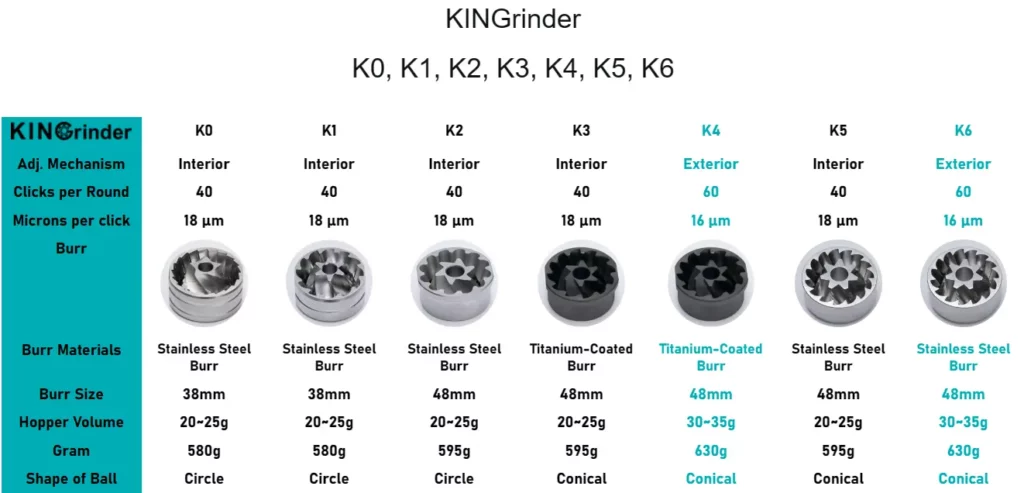
The KINGrinder Range
The KINGrinder range includes 7 different models, from K0 to K6. Each of these coffee grinders has unique characteristics. They are suitable for different extraction methods, whether it’s for espresso, gentle methods, or versatile use. Coffee enthusiasts can thus choose the grinder that best suits their needs and tastes.
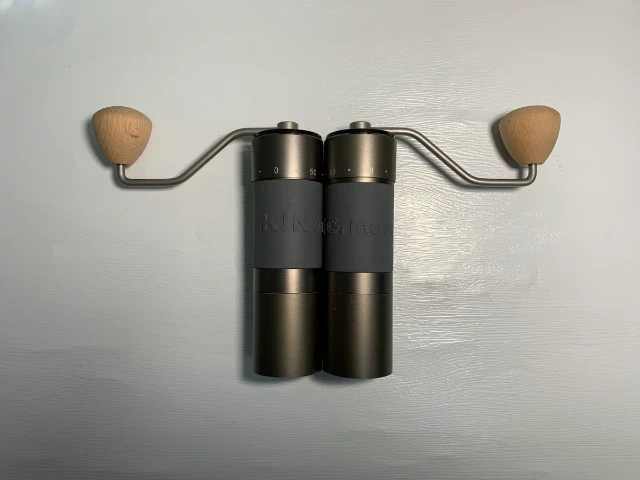
The KINGrinder K4 and K6
For our use, we, the two authors of this blog, have each selected a different model. We will present these models to you. Psychogeek chose the Kingrinder K4, a grinder focused on espresso, while Coffeegeek opted for the Kingrinder K6, a more versatile grinder. Visually, these are two quite similar grinders, so much so that it’s impossible to distinguish them from the outside.
Both offer:
- A unibody aluminum design
- An external adjustment of 60 clicks per rotation
- 48 mm stainless steel conical burrs
- An adjustment of 16μm per click
- The possibility to use a drill for effortless grinding
- A double ball bearing for grind consistency
Differences between the KINGrinder K4 and K6
The differences lie inside. It’s the geometry of the burrs that varies between the two products. The K4 has titanium-plated burrs, and the K6, heptagonal stainless steel burrs.
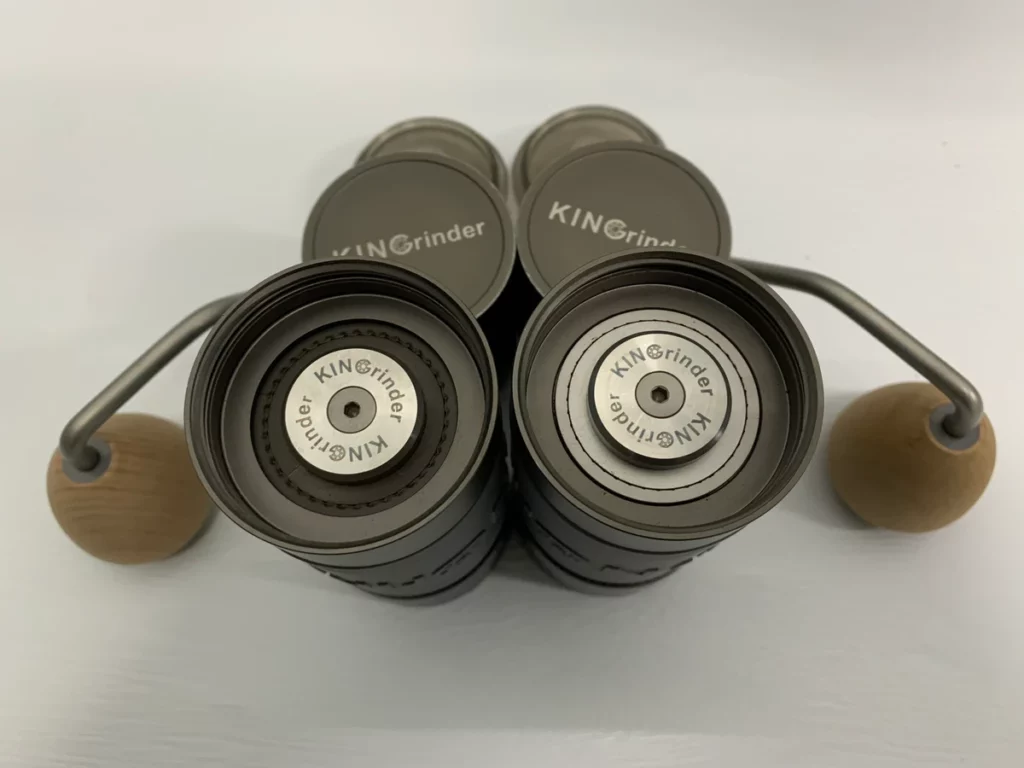
According to the brand, the K4 is more suited for espresso with a broader and slightly faster range when it comes to fine grinding. In other words, the K4 is ideal for espresso coffee enthusiasts who want a fine and fast grind. The K6 will be the most versatile grinder in the range. But what about in practice?
Our review of the KINGrinder K4 and K6
It turns out that we each chose one of the two models from the brand. So, this is an opportunity to give you combined feedback on our experiences. We have used the KINGrinder K4 and K6.
Handling of the KINGrinder K4 and K6
The KINGrinder K4 and K6 coffee grinders are identical, except for their burrs. Their body is entirely made of aluminum, with a rubber part for a good grip and to prevent slipping.
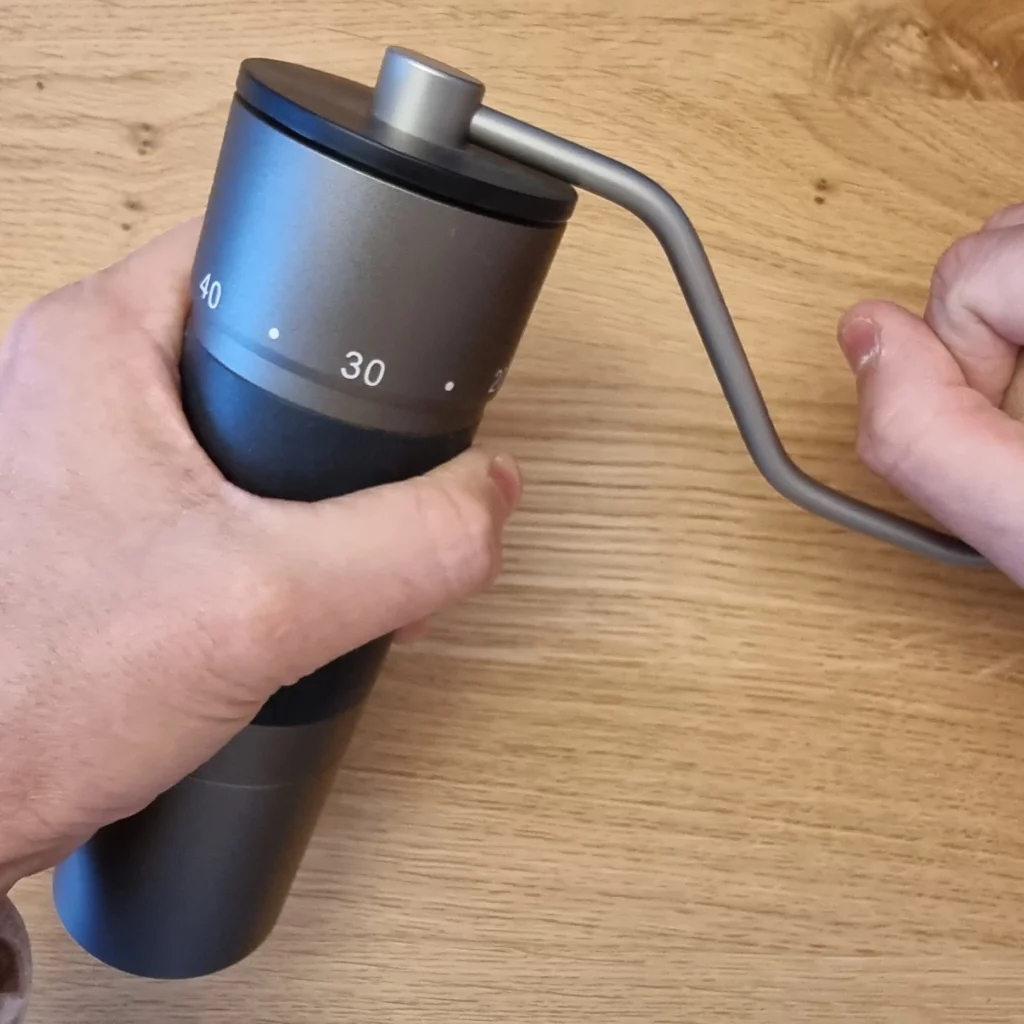
The adjustment ring is located above the body. It has 60 notches per turn. Its diameter is slightly larger than that of the body, securing the grinder by preventing it from slipping.
The container at the bottom screws onto the grinder with a large thread pitch, preventing damage.
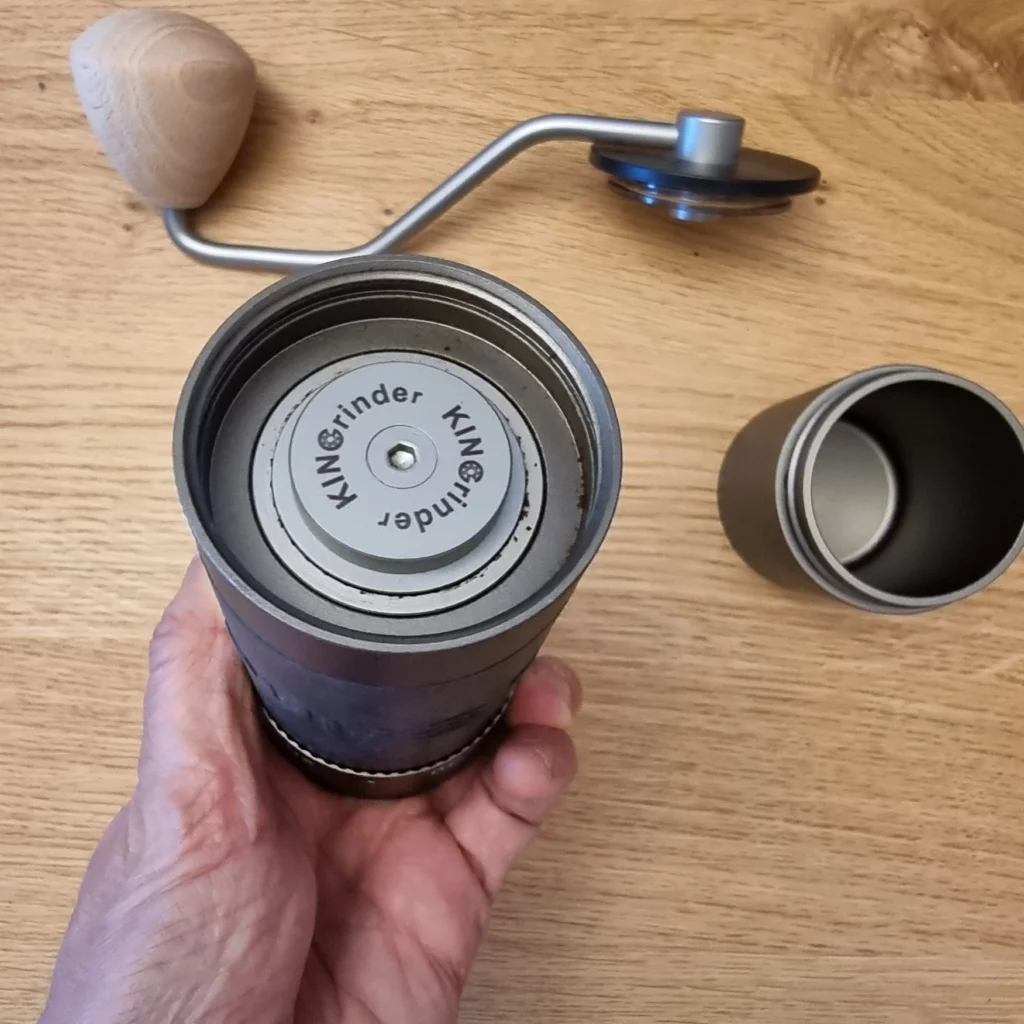
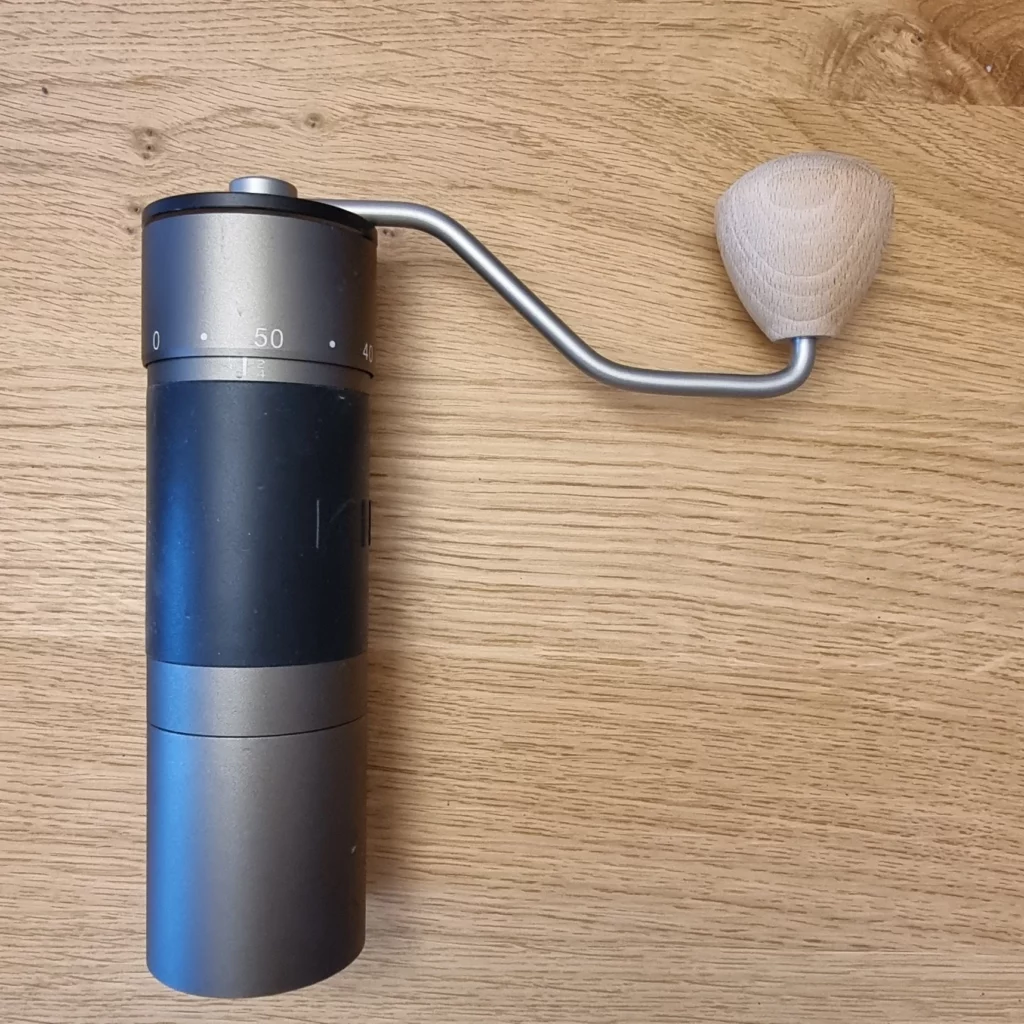
The Handle
The handle of the KINGrinder K4 and K6 coffee grinders is attached to a plastic cap that allows closing the grinder during use.
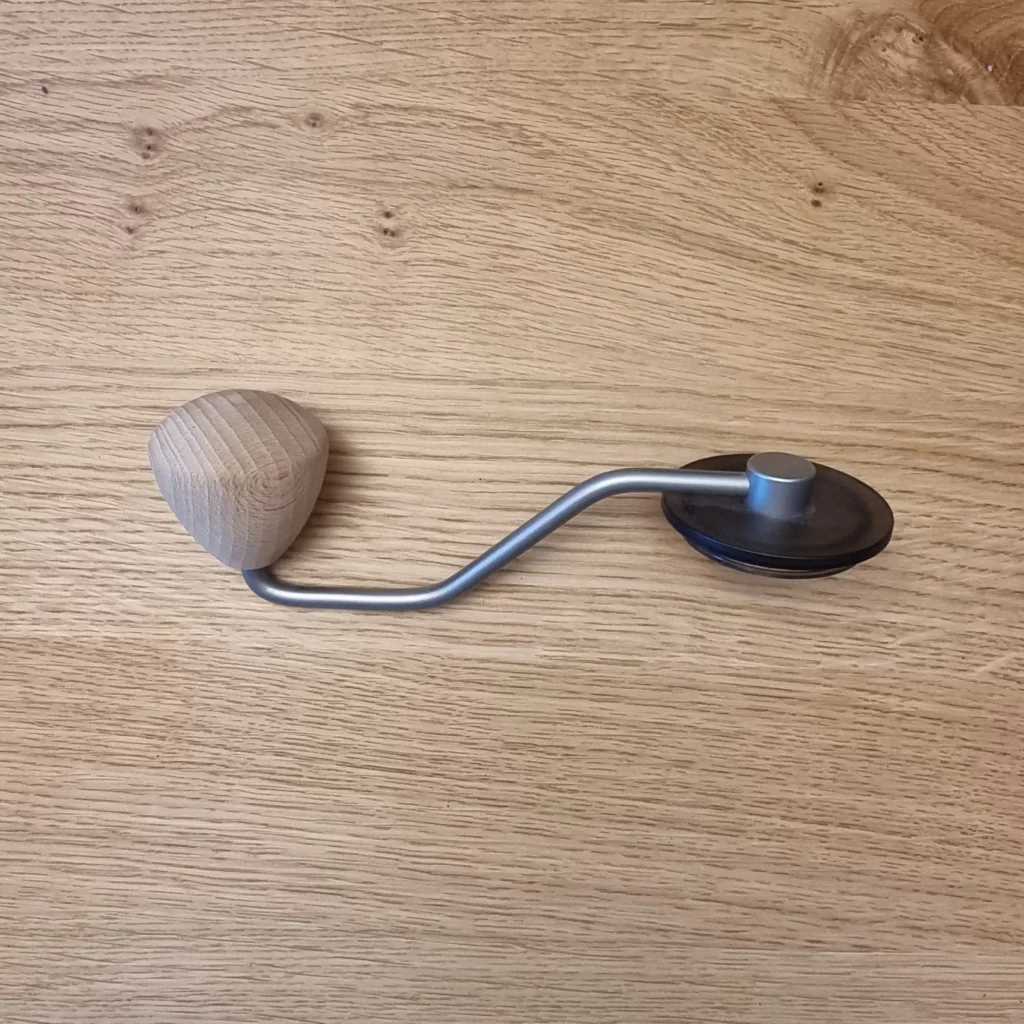
The wooden handle is comfortable to hold. It reminds of the shape of those on the C40 or 1Zpresso models, although it’s slightly smaller. A specificity of the KINGrinder K4 and K6 is the ability to detach the cap from the handle to close the grinder when using a drill.
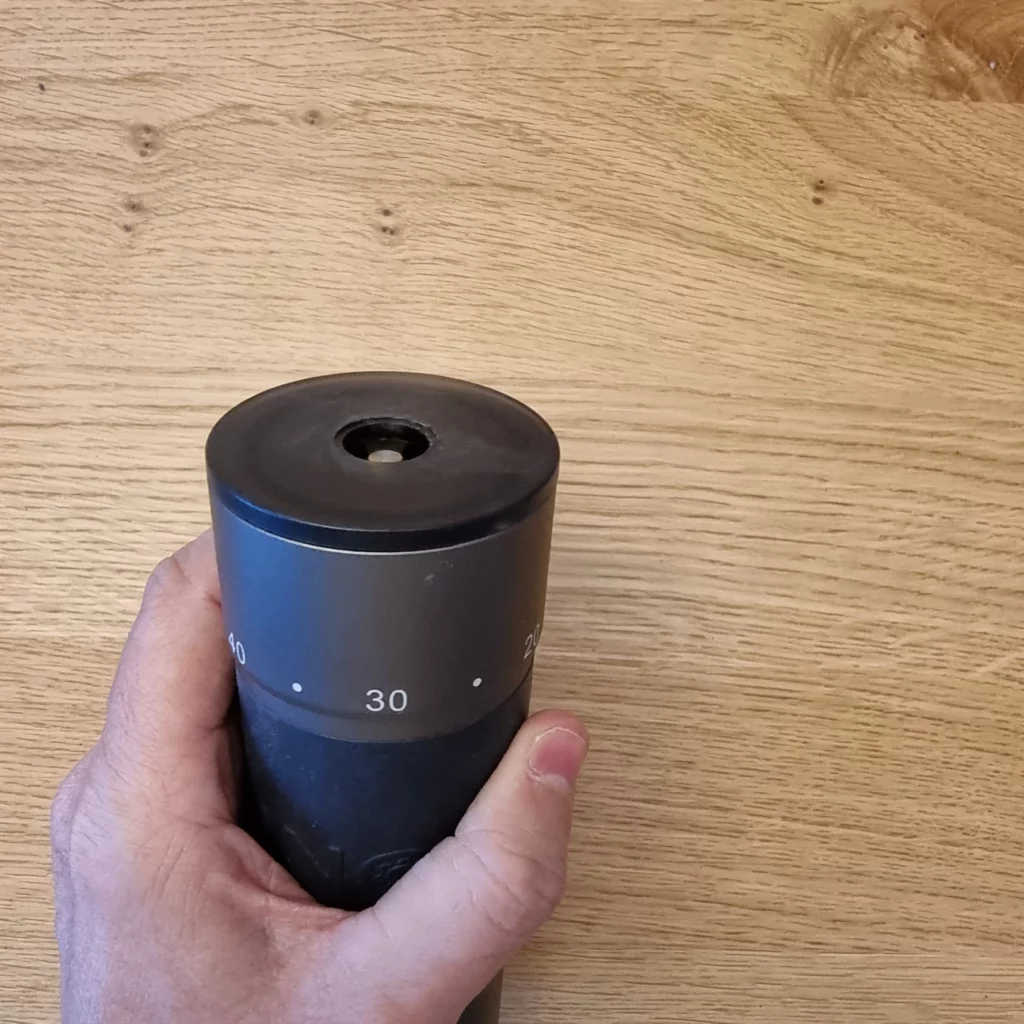
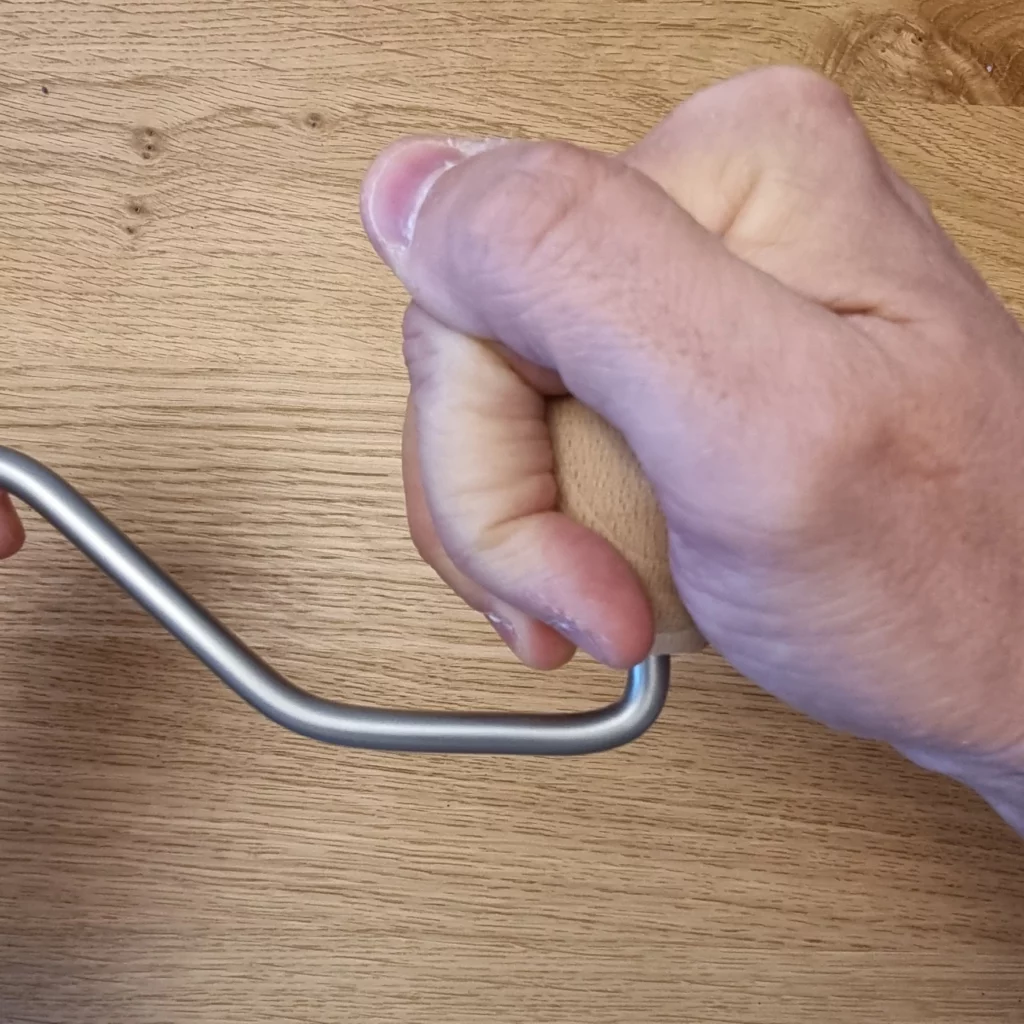
The Container
The container that collects the ground coffee screws onto the body of the grinder. Unlike the Kinu m47 Phoenix, which has a very light plastic container, the containers of the KINGrinder K4 and K6 are heavy enough to prevent the grinder from tipping over when placed on a table.
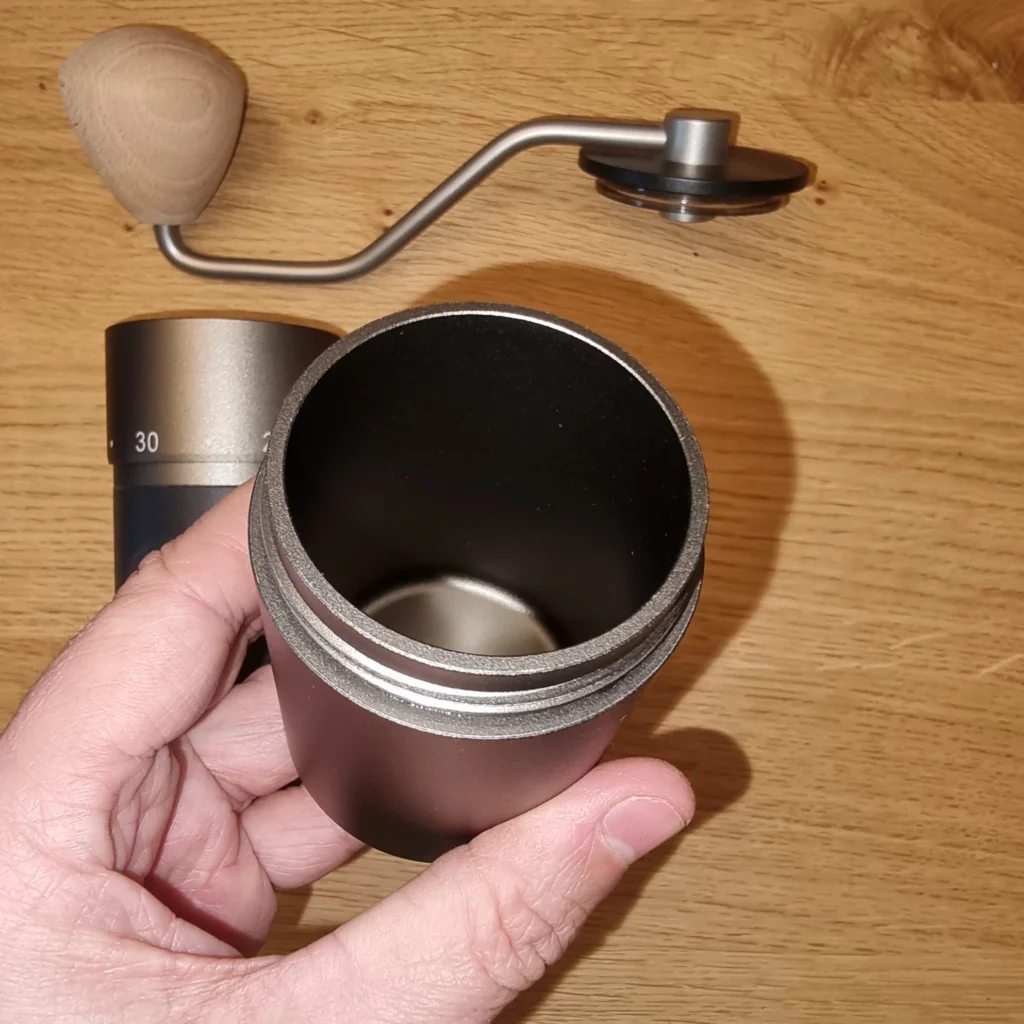
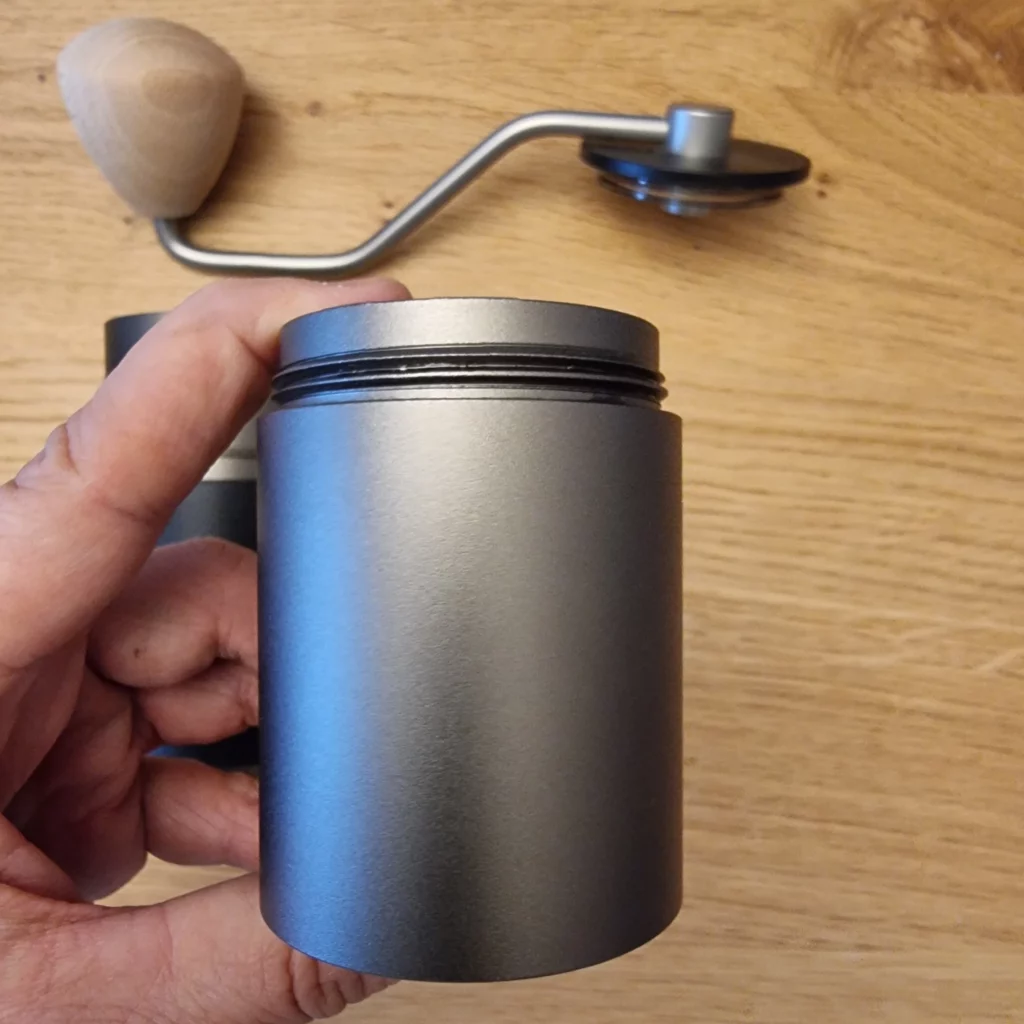

Moreover, the design of the container does not have any edges inside, which prevents retaining ground coffee when pouring it into a filter.
Disassembling the KINGrinder K4 and K6
The video below shows the steps to follow to disassemble this model of coffee grinder.
Disassembling this grinder is not the simplest I’ve had to disassemble. I think, for example, of the 1zpresso jmax which is easier to disassemble. However, it offers the possibility of being fully disassembled for cleaning inside.
Conclusion for the KINGrinder K4 and K6
A bit of context to start: My journey through specialty coffee began just under two years ago. I quickly transitioned to a manual espresso machine, which led me to say goodbye to a basic electric grinder. I was surprised to learn that to fully explore espresso, I would need to upgrade my equipment, and my budget was tight. At the time, there wasn’t a high-performing manual grinder available for under €200. So, I had to choose from top contenders like the Timemore Chestnut X, the El Commandante C40, the 1Zpresso Jmax, BPlus’s Apollo, and the Kinu M47 Phoenix. However, the scenario changed completely in 2023 with the arrival of KINGrinder in the market.
High-Quality Finish
I began my experiments with the Timemore, but soon noticed its limitations. So, I started looking for a new grinder and found a brand-new K4 on a well-known classifieds website. I was pleasantly surprised upon unboxing it. Coming from a high-end, well-finished grinder, I was apprehensive about getting something inferior given the lower price of this product. I had the misconception that a worthy manual coffee grinder had to cost at least €200 to fully enjoy my favorite espresso coffees.

I’ll be straightforward, even if it might upset some: the K series from KINGrinder offers the best value for money on the market in 2023. To me, they are even more interesting than the 1zpresso grinders, which had already paved the way for high-performance and more affordable grinders. The K4 is a high-quality grinder with excellent finish and worth its price. The adjustment is precise and adequate for all methods. The brand has even gone further by reinforcing the axle of the burrs so that you can use a drill without the risk of premature wear.
48mm Burrs for Speed
The most significant aspect of this grinder is its speed. Indeed, it takes me just over 35 seconds to grind 20g for espresso, a drastic change from my Timemore, which took 1 minute and 30 seconds to achieve the same result. I also compared the grinds from both mills and couldn’t find any differences in terms of consistency. YES! An €88 grinder is just as efficient as its €200+ counterpart, prompting a reevaluation of the positioning of these high-end grinders.
In terms of speed, the K6 favorably compares to the Kingrinder K4. It takes me only 35 seconds to grind 20g for an espresso.
As for the end result in the cup, the K4 delivers round and flavorful espressos with a syrupy body, beautiful acidity, and sweetness, depending on the coffee’s origin. For filter coffee, it suits my taste, although I sometimes miss my Timemore, which offered a coffee with better clarity and more finesse in taste. It’s not limited to espresso.
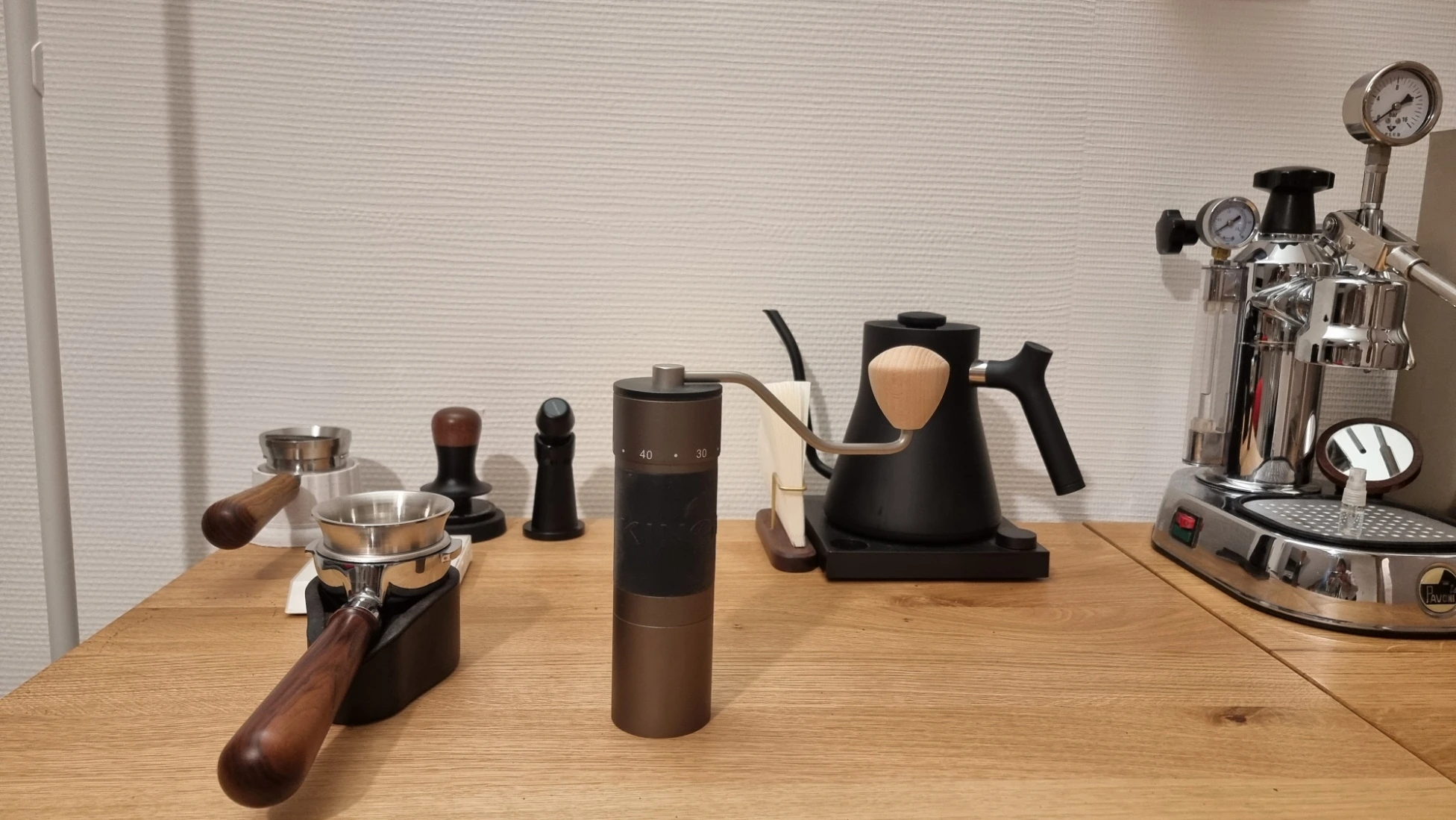
Leave a Reply